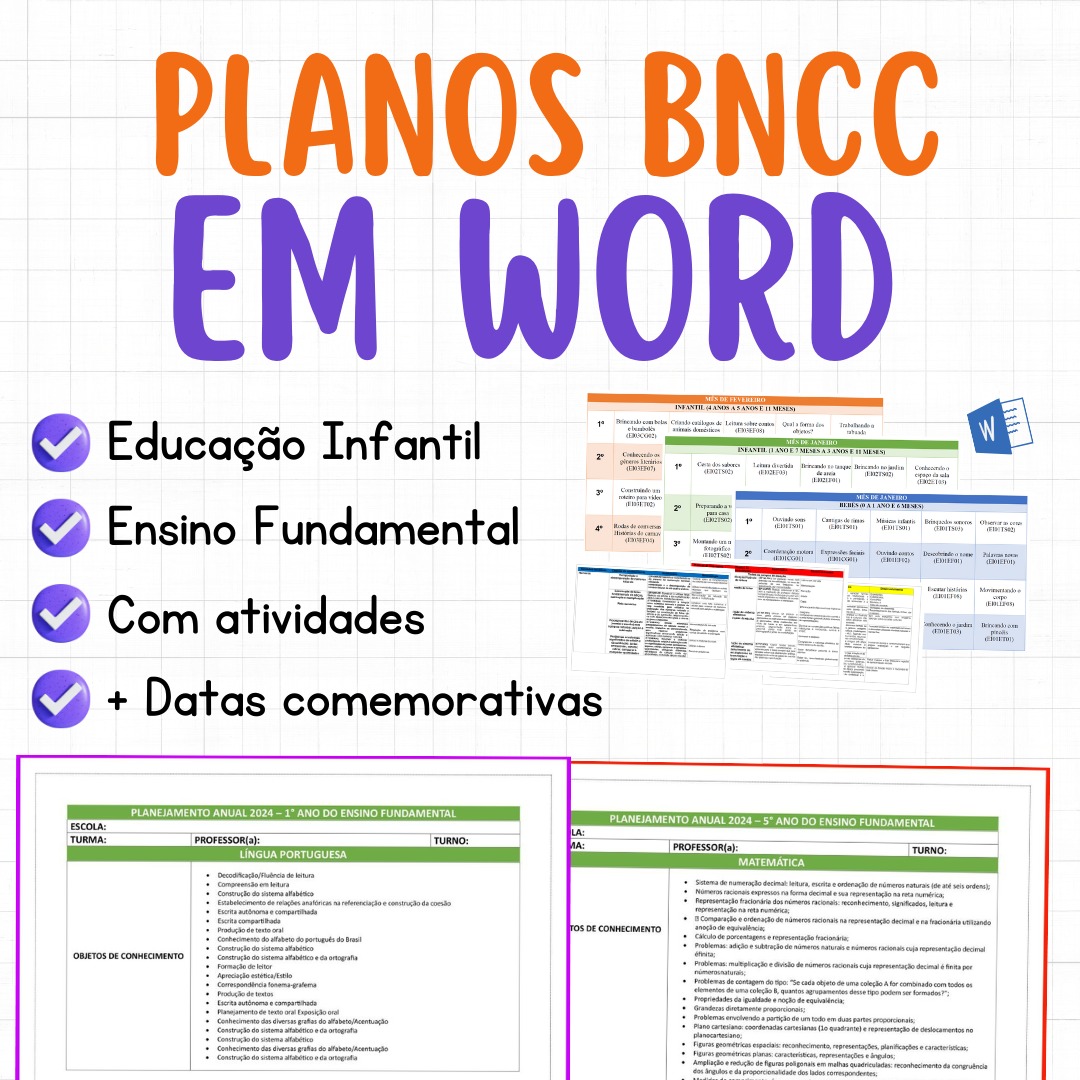It is undeniable that environmental education plays a crucial role in children's development, shaping not only their understanding, but also their attitudes towards the environment. As educators, we have the privilege and responsibility of introducing environmental topics from an early age, and a well-designed environmental lesson plan for early childhood education can be a powerful tool in this process.
Why is it so important to start this dialogue about the environment with children? Well, they are the future of our planet. By cultivating their understanding of the importance of preserving and protecting the environment, we are investing in future active defenders of nature, capable of making a difference in their communities and beyond.
Neste artigo, exploraremos ideias e sugestões de atividades, bem como um plano de aula abrangente sobre a temática do meio ambiente.
Key Points:
- An environmental lesson plan for early childhood education is a powerful tool for raising children's awareness of the importance of taking care of the environment.
- This lesson plan is full of practical activities, specific resources and active participation from children.
- By learning about the environment and its conservation, children become agents of change in their communities and beyond.
Lesson plan suggestion
BNCC skill worked:
EF01HI08 – Recognize the meaning of school celebrations and festivals, differentiating them from festive dates celebrated within the family or community.
1. Goals:
- Recognize the meaning of Environment Day as a date dedicated to reflection and actions in favor of environmental preservation and sustainability, differentiating it from other celebrations.
- Develop awareness about the importance of environmental protection and the role of each individual in this process.
2. Introduction: (15 minutes)
- Start the class by explaining what Environment Day is and why it is celebrated on June 5th.
- Contextualize the relevance of the date, highlighting the importance of preserving the environment to guarantee a sustainable future for future generations.
- Compare Environment Day with other festivities, such as birthdays and religious holidays, highlighting their differences in purpose and focus.
3. Development: (50 minutes)
3.1. Review of previous knowledge: (10 minutes)
- Briefly review the concepts of sustainability and the environment, highlighting the relationship between them.
3.2. Theory presentation: (15 minutes)
- Explore the main environmental challenges faced today, such as deforestation, pollution, climate change and biodiversity loss.
- Discuss how human actions contribute to these problems and the importance of adopting sustainable practices.
3.3. Practical activities: (25 minutes)
3.3.1. Activity 1: Creating posters
- Divide the class into groups and assign each group a topic related to environmental preservation (e.g. recycling, saving water, use of renewable energy).
- Ask groups to create posters relating to the assigned topic, highlighting its importance and practical ways of contributing to environmental preservation.
- Allow students to use a variety of materials, such as colored paper, pens, colored pencils, magazines for clippings, etc.
3.3.2. Activity 2: Debate on sustainable actions
- Promote a debate in the classroom about different sustainable actions that can be adopted in everyday life, such as reducing plastic consumption, using public transport, planting trees, among others.
- Encourage students to express their opinions and argue in favor of the measures they consider most effective and viable.
4. Return: (20 minutes)
4.1. Learning Check: (10 minutes)
- Hold a group discussion to review the main points covered during the class and check students' understanding of the meaning and importance of Environment Day.
- Encourage students to share examples of how they intend to contribute to environmental preservation in their daily lives.
4.2. Student feedback: (10 minutes)
- Allow students to express their opinions and feedback about the class, highlighting what they liked most and felt most challenged.
5. Conclusion: (15 minutes)
- Recap the key points of the class, reinforcing the importance of environmental preservation and the engagement of each individual in this process.
- Encourage students to reflect on how they can make a difference in caring for the environment and to commit to sustainable actions in their daily lives.
- End the class by highlighting that environmental preservation is not just an individual responsibility, but a collective effort necessary to guarantee a healthy and sustainable planet for everyone.
References
Comics/comics about the environment




Environment day websites
June 5th – World Environment Day – Education World (uol.com.br)
June 5th — World Environment Day – Brasil Escola (uol.com.br)





1 thought on “Plano de Aula sobre Meio Ambiente para Educação Infantil”